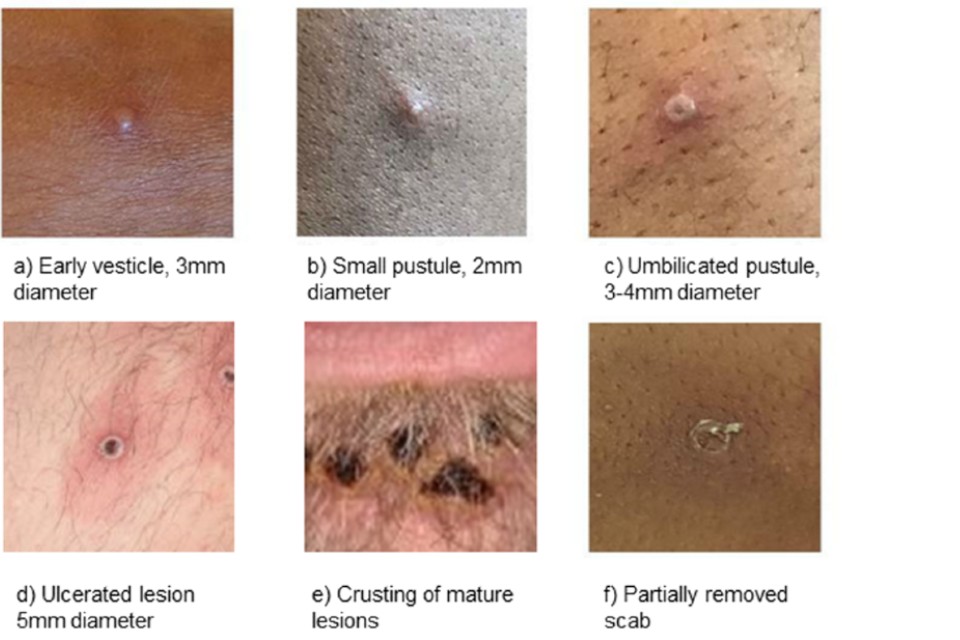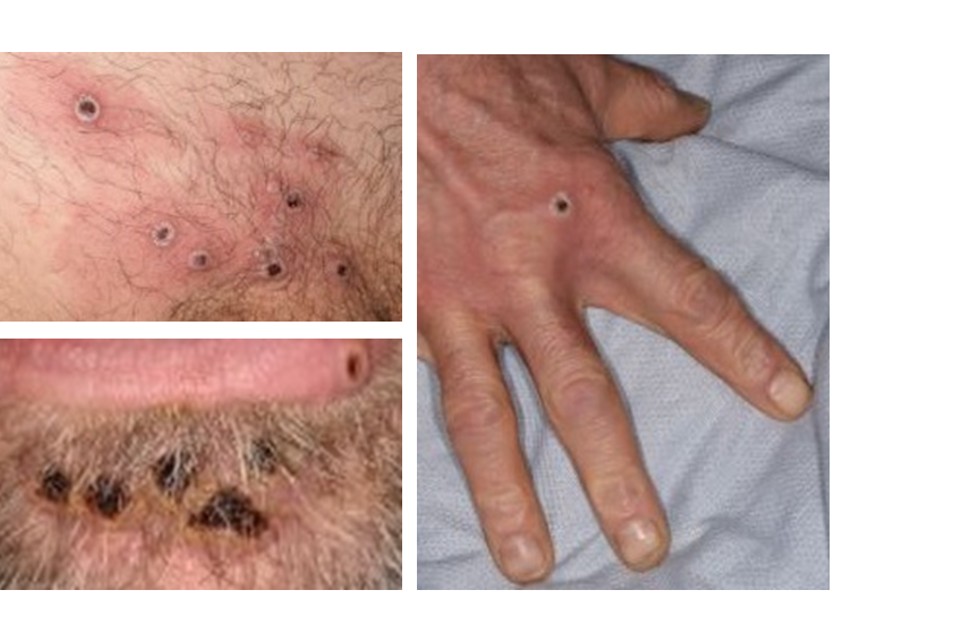Monkeypox: background information
The epidemiology, symptoms, diagnosis and management of monkeypox virus infections.
Guidance
See the monkeypox guidancecollection page. for further resources including guidance for health professionals.
Epidemiology
Monkeypox is a rare disease that is caused by infection with monkeypox virus.
Monkeypox was first discovered in 1958 when outbreaks of a pox-like disease occurred in monkeys kept for research. The first human case was recorded in 1970 in the Democratic Republic of the Congo (DRC), and since then the infection has been reported in a number of central and western African countries. Most cases are reported from the DRC and Nigeria.
In 2003, monkeypox was recorded in the US when an outbreak occurred following the importation of rodents from Africa. Cases were reported in both humans and pet prairie dogs. All the human infections followed contact with an infected pet and all patients recovered. No other country outside West and Central Africa has reported similar outbreaks.
2022
Contact tracing and investigations are ongoing to identify where and how the cases reported since 7 May acquired their infection.
2021
In May 2021 and June 2021, 3 monkeypox cases were reported from within the same family; the index case had recent travel history to Nigeria.
2019
In December 2019, an individual in England was confirmed to have monkeypox after recently travelling from Nigeria to the UK.
2018
In September 2018, 2 cases of monkeypox were identified in individuals who had recently travelled from Nigeria to the UK. The cases were epidemiologically unconnected.
A third monkeypox case was reported in September 2018. The case was a healthcare worker involved in the care of one of the previous cases in 2018 and was infected following contact with contaminated bed linen.
Travel related monkeypox cases have also been reported in the US in 2021, Singapore in 2019, Israel in 2018 and Benin in 1978.
Transmission
Monkeypox does not spread easily between people.
Spread of monkeypox may occur when a person comes into close contact with an infected animal (rodents are believed to be the primary animal reservoir for transmission to humans), human, or materials contaminated with the virus. Monkeypox has not been detected in animals in the UK.
The virus enters the body through broken skin (even if not visible), the respiratory tract, or the mucous membranes (eyes, nose, or mouth).
Person-to-person spread is uncommon, but may occur through:
- contact with clothing or linens (such as bedding or towels) used by an infected person
- direct contact with monkeypox skin lesions or scabs
- coughing or sneezing of an individual with a monkeypox rash
Clinical features
The incubation period is the duration/time between contact with the infected person and the time that the first symptoms appear. The incubation period for monkeypox is between 5 and 21 days.
Monkeypox infection is usually a self-limiting illness and most people recover within several weeks. However, severe illness can occur in some individuals.
The illness begins with:
- fever
- headache
- muscle aches
- backache
- swollen lymph nodes
- chills
- exhaustion
Within 1 to 5 days after the appearance of fever, a rash develops, often beginning on the face then spreading to other parts of the body. The rash changes and goes through different stages before finally forming a scab which later falls off.
An individual is contagious until all the scabs have fallen off and there is intact skin underneath. The scabs may also contain infectious virus material.

Images of individual monkeypox lesions


Notes
Areas of erythema and/or skin hyperpigmentation are often seen around discrete lesions.
Lesions can vary in size and may be larger than those shown.
Lesions of different appearances and stages may be seen at the same point in time.
Detached scabs may be considerably smaller than the original lesion.
Diagnosis
Clinical diagnosis of monkeypox can be difficult, and it is often confused with other infections such as chickenpox. A definite diagnosis of monkeypox requires assessment by a health professional and specific testing in a specialist laboratory.
In the UK, the Rare and imported pathogens laboratory (RIPL) at the UK Health Security Agency (UKHSA) Porton Down is the designated diagnostic laboratory.
Suspected cases should be discussed with the imported fever service prior to submitting samples for laboratory testing.
Samples from suspect cases should be shipped as Category B diagnostic samples, whilst those from confirmed cases should be shipped as Category A.
Treatment
Treatment for monkeypox is mainly supportive. The illness is usually mild and most of those infected will recover within a few weeks without treatment.
Smallpox vaccine, cidofovir, and tecovirimat can be used to control outbreaks of monkeypox.
Vaccination against smallpox can be used for both pre and post-exposure and is up to 85% effective in preventing monkeypox. People vaccinated against smallpox in childhood may experience a milder disease.
Infection prevention and control
Prevention of transmission of infection by respiratory and contact routes is required. Appropriate respiratory isolation is essential for suspected and confirmed cases. Scabs are also infectious and care must be taken to avoid infection through handling bedding, clothing, and so on.
Monkeypox virus is classified as an ACDP Hazard Group 3 pathogen and all laboratory work with live virus must be conducted at full Containment level 3 (CL3), in accordance with the Control of Substances Hazardous to Health Regulations 2002 (as amended).
Clinical laboratories should be informed in advance of samples submitted from suspected or confirmed diagnosis of monkeypox. Laboratories must ensure that appropriate controls commensurate to CL3 are in place to minimise risk to laboratory workers so that they can safely perform laboratory tests that are essential to clinical care.
Further information
See WHO factsheet.
Additional monkeypox resources are also available on GOV.UK, including information on case definitions, contact tracing and vaccination.
Last updated
-
Updated images of monkeypox lesions.
-
Added link to monkeypox guidance, moved guidance for primary care to monkeypox guidance page, and removed guidance for environmental cleaning and decontamination (incorporated into 'Principles for monkeypox control in the UK', available on guidance page).
-
Withdrew guidance for environmental cleaning and decontamination.
-
Updated guidance.
-
Added links to additional monkeypox guidance.
-
Updated guidance.
-
Updated with monkeypox case in England in December 2019.
-
Updated cleaning and decontamination guidance (v4).
-
Updated guidance on decontamination and cleaning.
-
Updated guidance for cleaning and decontamination.
-
Added guidance on environmental cleaning and decontamination.
-
Added primary care guidance.
-
First published.